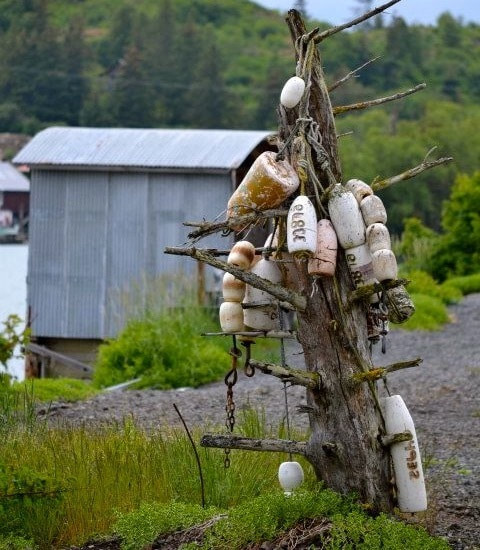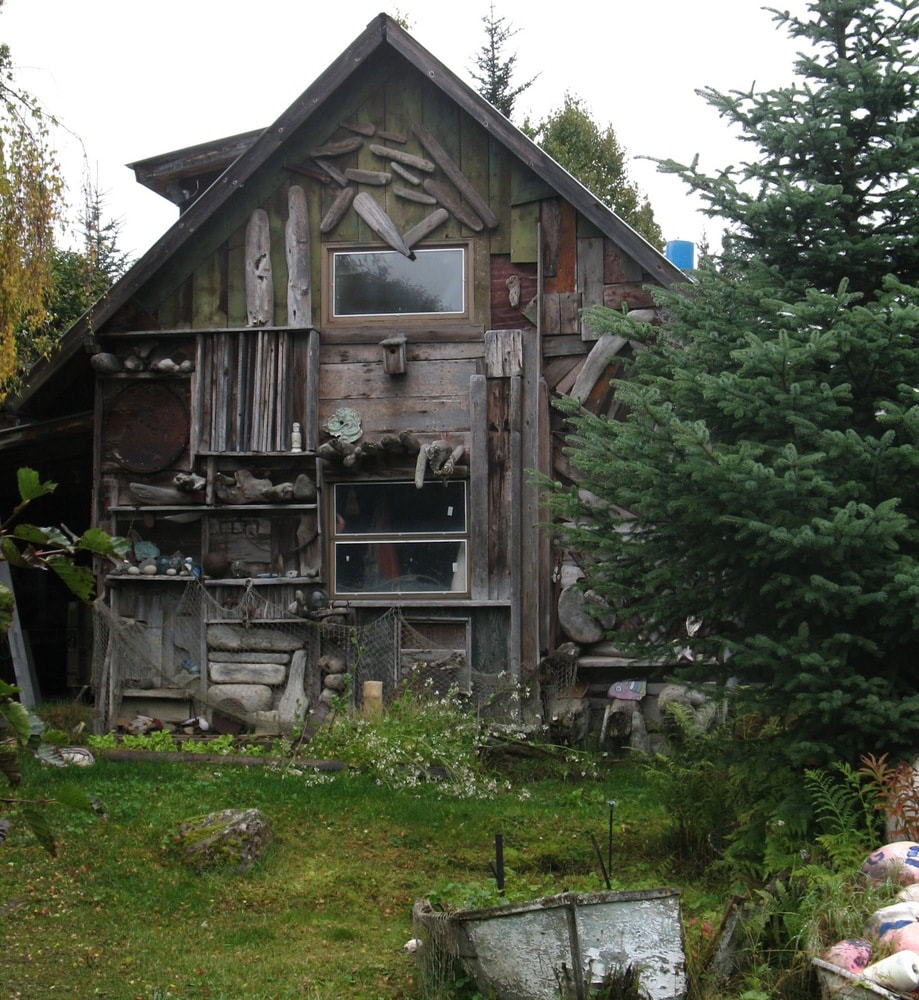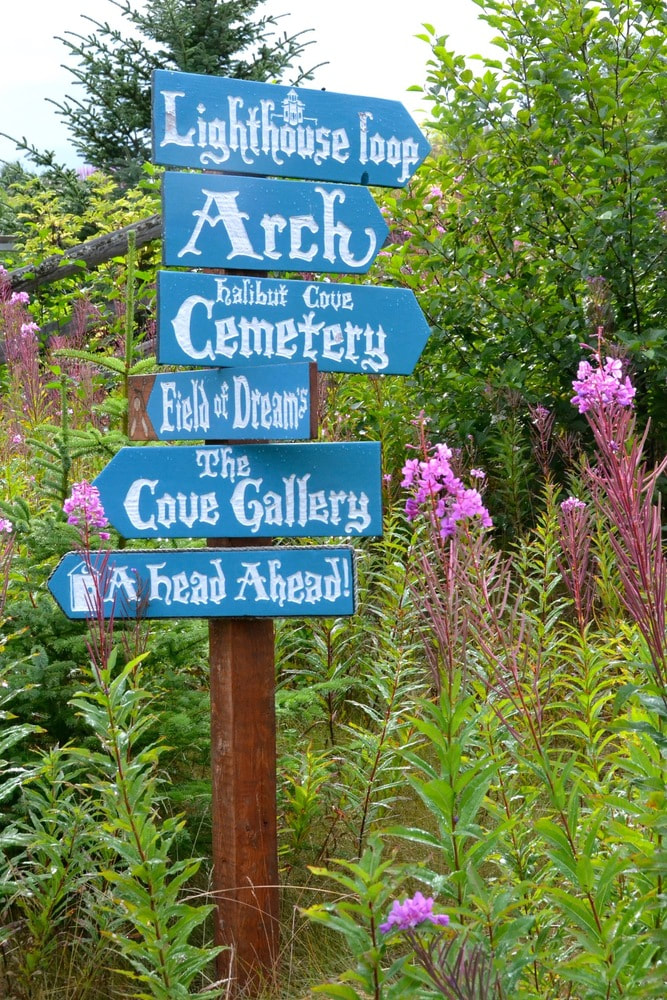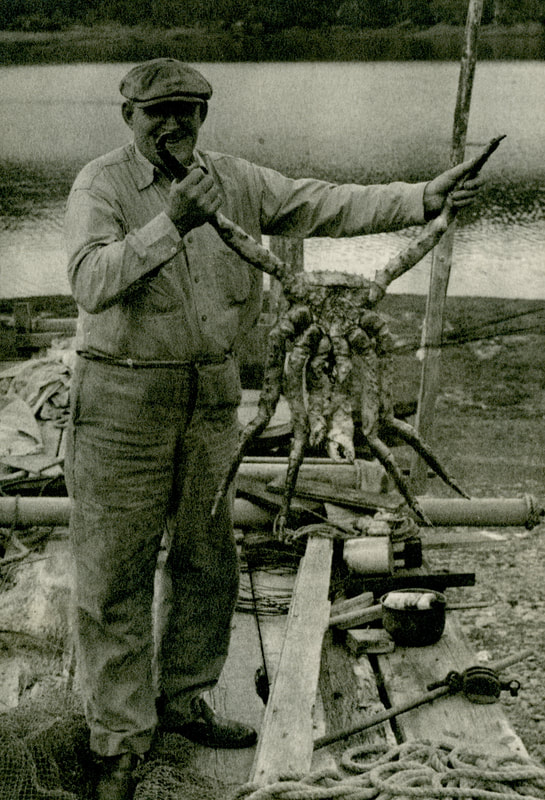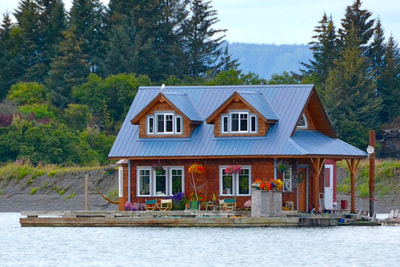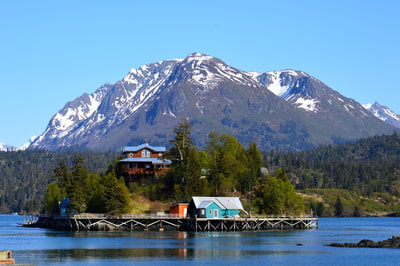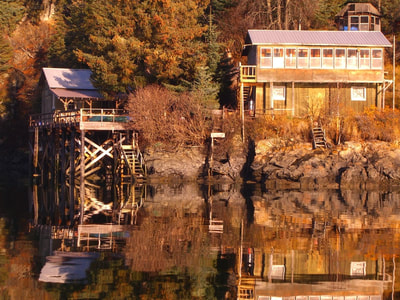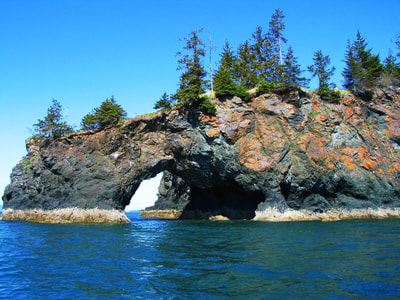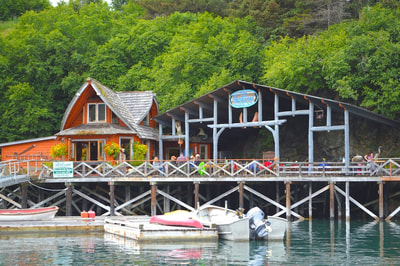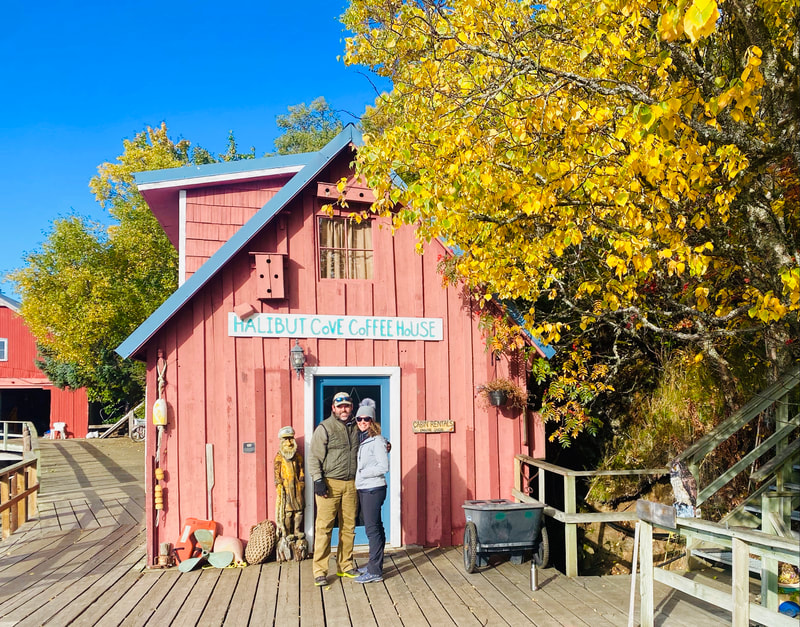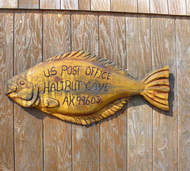Halibut Cove and Kachemak Bay
Alaska’s Ridgewood Wilderness Lodge is located in beautiful Halibut Cove, just 7 miles from Homer, Alaska.
|
Halibut Cove is an Alaskan paradise. Because Halibut Cove is an island, it is only accessible by boat or plane. Located on the Kenai Peninsula, on the south side of Kachemak Bay across from Homer, Halibut Cove is a peaceful, quaint community surrounded by mountains, forests, glaciers, coastline and oceans and is home to abundant wildlife.
|
|
About Halibut Cove, Alaska
Artists, craftsmen, fishermen and abundant wildlife make up the small community of Halibut Cove. From the floating post office, to the boardwalk that runs along the water’s edge past the coffee shop & art galleries to the local restaurant, visitors to Halibut Cove will be enchanted by this unique area of Alaska.
About Homer, Alaska
Homer, Alaska, known as the “Halibut Fishing Capital of the World”, 200 miles south of Anchorage, is surrounded by amazing wilderness and ocean on Kachemak Bay. The Homer Spit (a long, narrow point of land extending out into water) has the longest road into ocean water in the world and is rated as one of the top 100 beaches in the United States. The town grew up around the coal mines that were established there in 1889, and it was named for Homer Pennock, a gold prospector. Alaska: The Last Frontier is a popular TV show that has showcased the beauty of Homer and the unique surrounding areas.
|
The Ridgewood is located in a secluded spot in Halibut Cove, across the Bay from Homer and adjacent to the Kachemak Bay State Park and Kachemak Bay Wilderness Park, surrounded by pristine wilderness and gorgeous grounds. This Alaskan hamlet has 1 restaurant, 2 art galleries, and a plentiful opportunity to enjoy the outdoors. The Ridgewood is the perfect home base for any of your Alaskan adventures whether it be bear viewing, halibut and salmon fishing, guided hikes, flight seeing or wildlife viewing.
The natural beauty and adventure of Alaska awaits you at the Ridgewood. A History of Halibut Cove
By Diana Tillion A Scandinavian fisherman found the tremendous herring spawning area in the Halibut Cove Lagoon in 1911 - a lagoon shaped like a balloon with extreme depths, inside mountainous hills with a narrow and shallow entrance. For the herring to gather and spawn, the lagoon habitat was perfect. Scandinavians came in substantial numbers to build 32 saltries, and harvest and preserve the herring roe. Many European men and women came to the winter fishery to work and Scottish ladies were praised for their skills. They came in the spring and left when the production was finished. Ishmailof Island, just west of the entrance, provided a place for housing and warehouses. Halibut Cove grew to considerable numbers. Professor Morgan Sherwood, a historian, found a letter in the archives of Washington, D.C, asking the government to stop the saltries from dumping their waste in the lagoon, for fear that pollution would harm the herring spawning grounds. The letter in reply said, “On a huge coastline like that?! You have to be kidding!” The fisheries ended in 1928 when the herring failed to return. The herring fishermen left empty warehouses and a vacated village except for a few Scandinavian fishermen who were already fishing salmon and halibut for the canneries developing in Seldovia. The influx of people being offered homesteads by the government on the Kenai Peninsula drastically escalated in the 1930’s. Kachemak Bay had been of interest to coal mining companies because of the rich coal veins that were on the north side. A dock and warehouse were built at the end of Homer Spit to accommodate the ships that came for coal to deliver to markets, as well as coal for boat fuel. The port was a valuable asset for the homesteaders too. The community slowly grew with fisherman and homesteaders. New fisheries were developed, and canneries were built on the Homer Spit. When we married in 1952, and moved to Halibut Cove, there were 6 old bachelors left over from the herring days. I had worked for the Homer, Alaska radio communication station, and my husband and I started KXC34, the only radio station in Halibut Cove. Because of my affiliation with the system, I often had to row around delivering messages in the community. Sam Pratt had provided Homer with the first crank telephone system, and Clem suggested one for Halibut Cove. No one agreed, but he bought the roll of wire and 17 telephones, and shoved them in his backpack. When he hiked around the Cove stringing the wire from tree to tree, no one tried to help him – but no one tried to stop him. If a squirrel chewed on a line, or a limb fell on a wire however, there would be a loud knock on the door, “Hey Red! Come fix the line!” Homer Electric established a system with 9 miles of wire crossing the bottom of the bay to be strung across the land and around the community in 1969 – we were no longer isolated. I had the first post office, with mail delivered by boat once a week. The population was expanding with fishing families, artists, and others attracted to the beauty of Halibut Cove. |
|
Now, Halibut Cove, Alaska is a beautiful place for those who live and enjoy its splendor. There are approximately 100 summer time residents who enjoy the 1 local restaurant, boardwalks, and 2 art galleries that culminate on one end of the island. In the winter, the community shrinks to 25 hardy souls who live on the island year around.
|
Planning your trip?
|
|
In Halibut Cove, Adjacent to the Kachemak Bay State Park.
|
Mailing Address:
PO Box 659 Homer, AK 99603 Physical Address: 46514 Sidelinger Trail Halibut Cove, AK 99603 [email protected] |
NOTE: We are located in the Alaskan wilderness , and sometimes phone service can be unreliable. If you leave a message and don't hear back from us within 24 hours, please try again, or send an email.
|
© 2024 Alaska's Ridgewood Lodge
